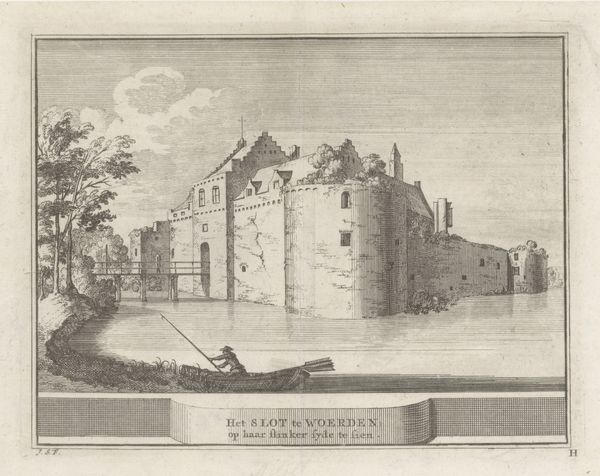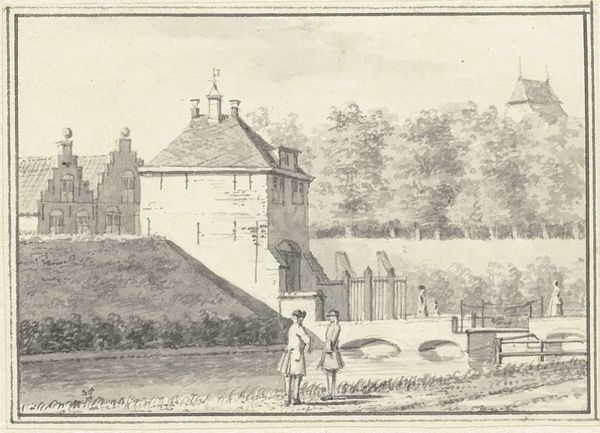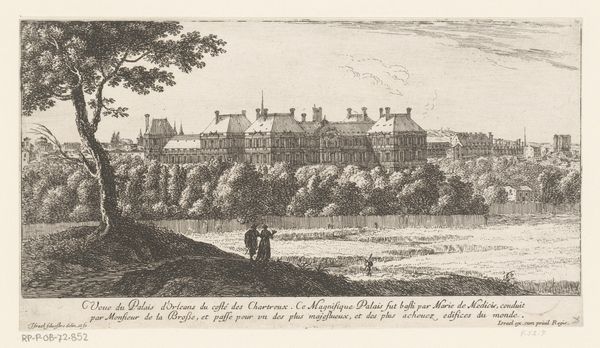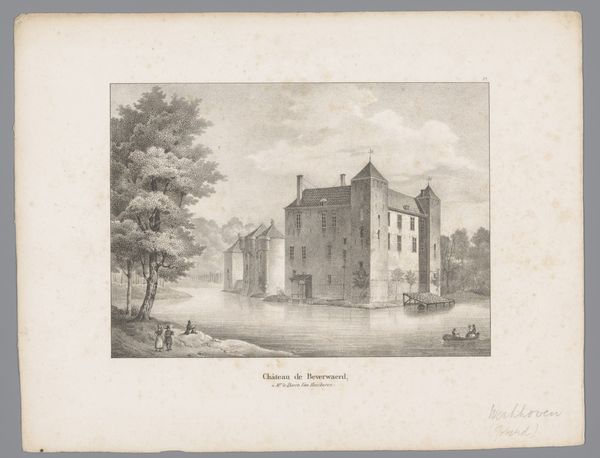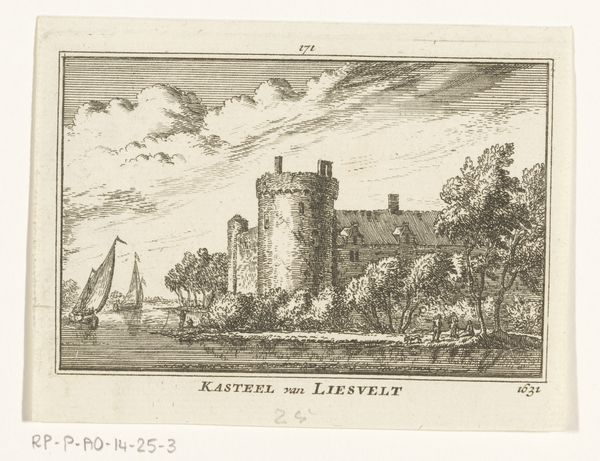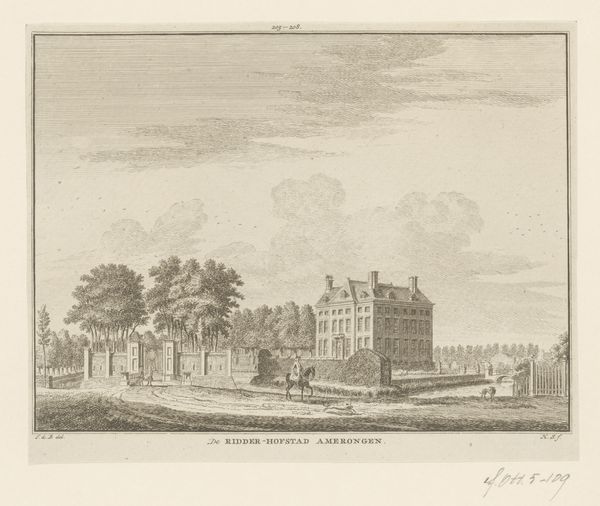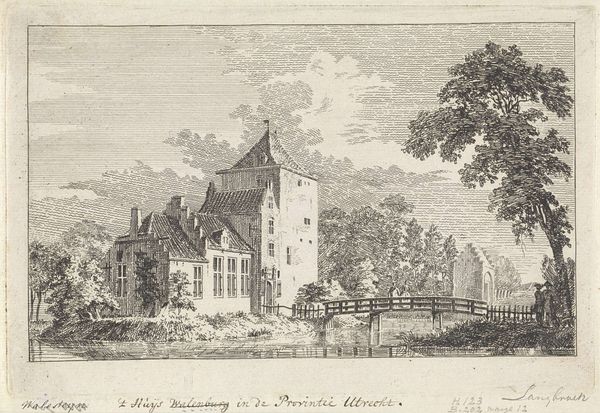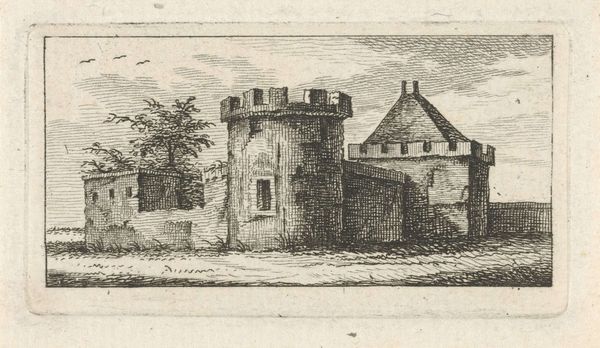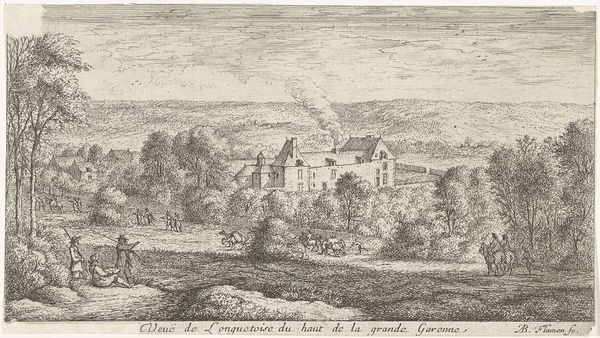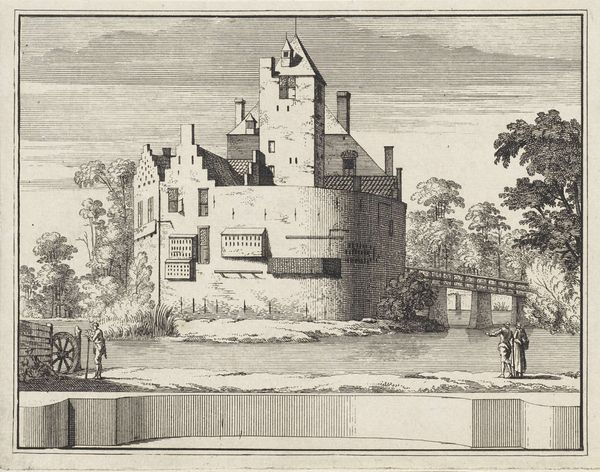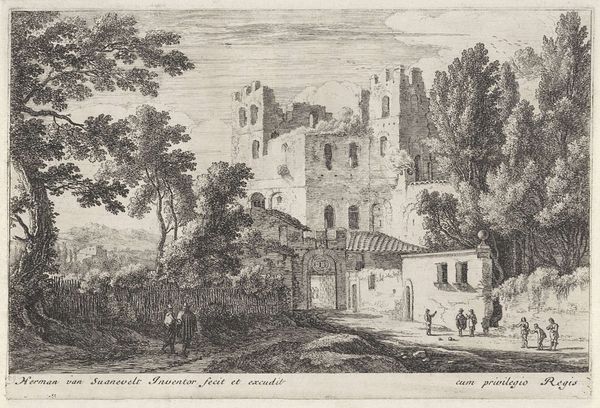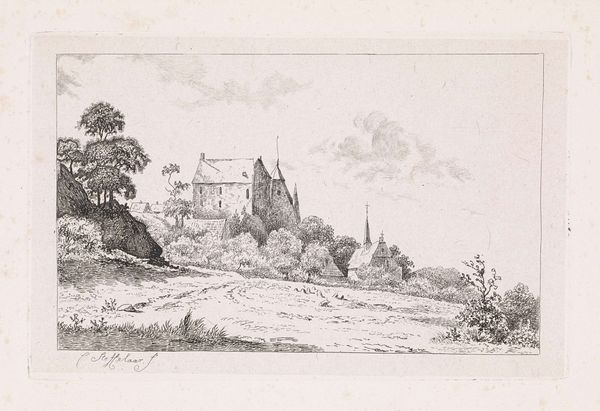
print, engraving
#
dutch-golden-age
# print
#
old engraving style
#
landscape
#
cityscape
#
engraving
Dimensions: height 80 mm, width 115 mm
Copyright: Rijks Museum: Open Domain
Curator: Here we have Abraham Rademaker's "Gezicht op een oude stadspoort te Naarden, 1670," an engraving from the early 18th century now held at the Rijksmuseum. Editor: Immediately, I’m struck by how delicately the artist has rendered the textures. The meticulous layering of lines suggests not just the form of the buildings and the trees, but also the material realities: the rough stonework, the dense foliage...it's incredibly evocative. Curator: Rademaker was particularly interested in documenting the Netherlands’ historical sites. These engravings played a role in constructing a national identity, presenting images of the past in an accessible form. He wasn't just recording architecture; he was crafting a sense of shared heritage. Editor: Precisely! And look at the lines defining the water. There's this clear understanding of how light interacts with the surface. It begs the question of the printing process; the pressure applied to the plate, the inks used... details that directly impact our viewing experience. It connects the past to a tactile process. Curator: It's interesting how these images circulated. They weren’t just hanging in elite homes. Because they are prints, they become a more democratized form of art, disseminating visions of Dutch history to a wider audience. Editor: A wider audience, indeed! Prints also invited touch and interaction, moving them outside of strictly curated gallery spaces and emphasizing an element of utility beyond the merely aesthetic. Curator: It makes you consider who exactly was consuming these images and what kinds of conversations they spurred. Were these tools for civic engagement, personal reflection, or both? Editor: It shows how even seemingly straightforward landscape depictions involve layers of skill, material choice, and socio-economic realities that shape the final artwork. Curator: Yes, there’s a complex interplay between representation and social function at play here. Editor: Examining the texture makes you understand more fully the artist's intentions and societal dynamics of that time.
Comments
No comments
Be the first to comment and join the conversation on the ultimate creative platform.
